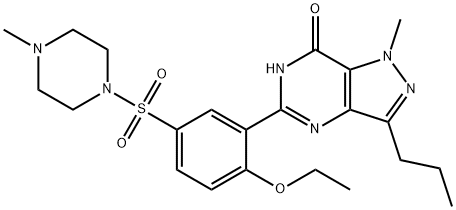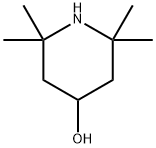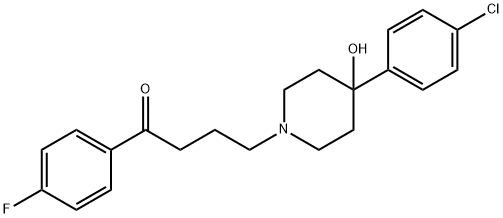Bipariden
- CAS NO.:514-65-8
- Empirical Formula: C21H29NO
- Molecular Weight: 311.46106
- MDL number: MFCD05662335
- EINECS: 2081846
- SAFETY DATA SHEET (SDS)
- Update Date: 2025-12-24 15:44:27

What is Bipariden?
Absorption
87% bioavailability
Toxicity
LD50=760 mg/kg (Orally in rats). Signs of overdose include dilated and sluggish pupils, warm, dry skin, facial flushing, decreased secretions of the mouth, pharynx, nose, and bronchi, foul-smelling breath, elevated temperature, tachycardia, cardiac arrhythmias, decreased bowel sounds, urinary retention, delirium, disorientation, anxiety, hallucinations, illusions, confusion, incoherence, agitation, hyperactivity, ataxia, loss of memory, paranoia, combativeness, and seizures.
Originator
Akineton HCl,Knoll,US,1959
The Uses of Bipariden
amoebicide
Background
A muscarinic antagonist that has effects in both the central and peripheral nervous systems. It has been used in the treatment of arteriosclerotic, idiopathic, and postencephalitic parkinsonism. It has also been used to alleviate extrapyramidal symptoms induced by phenothiazine derivatives and reserpine.
Indications
For use as an adjunct in the therapy of all forms of parkinsonism and control of extrapyramidal disorders secondary to neuroleptic drug therapy.
Definition
ChEBI: N-Propylpiperidine in which the methyl hydrogens are substituted by hydroxy, phenyl, and 5-norbornen-2-yl groups. A muscarinic antagonist affecting both the central and peripheral nervous systems, it is used in the treatment of all form of Parkinson's disease.
Manufacturing Process
65 grams of 3-piperidino-1-phenyl propanone-1 of the summary formula
C14H29ON, produced according to Mannich's reaction by reacting acetophenone
with formaldehyde and piperidine hydrochloride are dissolved in 300 cc of
benzene. The resulting solution is added to an organo-magnesium solution
prepared from 96 grams of [δ5-bicyclo-(2,2,1)-heptenyl-2]-chloride (also
known as 5-chloro-2-norbomene) 18.5 grams of magnesium shavings, and
300 cc of ether.
The reaction mixture is boiled for half an hour under reflux. Thereafter the
ether is removed by distillation, until the inside temperature reaches 65°-
70°C. The resulting benzene solution is added to 95 cc concentrated
hydrochloric acid containing ice for further processing. Thereby, 3-piperidino-
1-phenyl-1-[δ5-bicyclo-(2,2,1)-heptenyl-2]-propanol-1 of the summary
formula C21H29ON is obtained. The compound melts at 101°C and its
chlorohydrate has a melting point of about 238°C. The compound is difficultly
soluble in water, slightly soluble in ethanol, and readily soluble in methanol.
brand name
Akineton (Abbott).
Therapeutic Function
Antiparkinsonian
General Description
Biperiden,α-5-norbornen-2-yl- -phenyl-1-piperidinepropanol (Akineton), introduced in 1959,has a relatively weak visceral anticholinergic, but a strongnicotinolytic, action in terms of its ability to block nicotineinducedconvulsions. Therefore, its neurotropic action israther low on intestinal musculature and blood vessels. It hasa relatively strong musculotropic action, which is aboutequal to that of papaverine, in comparison with most syntheticanticholinergic drugs. Its action on the eye, althoughmydriatic, is much lower than that of atropine. These weakanticholinergic effects add to its usefulness in Parkinson syndromeby minimizing side effects.
Pharmacokinetics
Biperiden is a weak peripheral anticholinergic agent. It has, therefore, some antisecretory, antispasmodic and mydriatic effects. In addition, biperiden possesses nicotinolytic activity. The parenteral form of biperiden is an effective and reliable agent for the treatment of acute episodes of extrapyramidal disturbances sometimes seen during treatment with neuroleptic agents. Akathisia, akinesia, dyskinetic tremors, rigor, oculogyric crisis, spasmodic torticollis, and profuse sweating are markedly reduced or eliminated. With parenteral biperiden, these drug-induced disturbances are rapidly brought under control.
Clinical Use
Biperiden is used in all types of Parkinson disease (postencephalitic,idiopathic, arteriosclerotic) and helps toeliminate akinesia, rigidity, and tremor. It is also usedin drug-induced extrapyramidal disorders to eliminatesymptoms and permit continued use of tranquilizers.Biperiden is also of value in spastic disorders not related toparkinsonism, such as multiple sclerosis, spinal cord injury,and cerebral palsy. It is contraindicated in all formsof epilepsy.
Safety Profile
Poison by ingestion,subcutaneous, intraperitoneal, and intravenous routes.When heated to decomposition, it emits toxic fumes ofNOx.
Synthesis
Biperiden, 1-(5-norbornen-2-yl)-1-phenyl-3-piperidinopropan-1-ol (10.2.4), is also synthesized according to the method of making trihexyphenidyl, except by reacting 2-(1-piperidino)propiophenone (10.2.1) with 5-norbornen-2-ylmagnesiumbromide [33,34].
Metabolism
The metabolism of biperiden is not completely understood, but does involve hydroxylation.
Properties of Bipariden
| Melting point: | 114°C |
| Boiling point: | 451.49°C (rough estimate) |
| Density | 1.0202 (rough estimate) |
| refractive index | 1.5614 (estimate) |
| storage temp. | 2-8°C |
| solubility | Chloroform (Slightly), DMSO (Slightly,Sonicated), Methanol (Slightly, Sonicated) |
| form | Solid |
| pka | 14.05±0.29(Predicted) |
| color | White to Off-White |
| Water Solubility | 25.1 mg/L |
| NIST Chemistry Reference | Biperiden(514-65-8) |
Safety information for Bipariden
| Signal word | Warning |
| Pictogram(s) |
 Exclamation Mark Irritant GHS07 |
| GHS Hazard Statements |
H302:Acute toxicity,oral |
| Precautionary Statement Codes |
P280:Wear protective gloves/protective clothing/eye protection/face protection. P305+P351+P338:IF IN EYES: Rinse cautiously with water for several minutes. Remove contact lenses, if present and easy to do. Continuerinsing. |
Computed Descriptors for Bipariden
Bipariden manufacturer
New Products
4,4-Difluoropiperidine hydrochloride tert-butyl 9-methoxy-3-azaspiro[5.5]undecane-3-carboxylate Indole Methyl Resin N-Isopropylurea N,N-Dicyclohexylcarbodiimide(DCC) MELDRUMS ACID 5-METHYLISOXAZOLE-4-CARBOXYLIC ACID Magnessium Bis glycinate Zinc ascorbate 1-bromo-2-butyne 2-acetamidophenol 9(10H)-anthracenone Erythrosin B, 4-Piperidinopiperidine 2-((4-morpholinophenylamino) (methylthio) methylene) malononitrile 2,4-dihydroxybenzaldehyde 3-(4-morpholinophenylamino)-5-amino-1H-pyrazole-4-carbonitrile Methyl 2-methylquinoline-6-carboxylate 2,6-dichloro-4-nitropyridine 4-Bromo-2-chlorobenzonitrile 2-(benzylamino)acetic acid hydrochloride 4-(tert-Butoxycarbonylamino)but- 2-ynoic acid 3,4-dihydro-2H-benzo[b][1,4]dioxepine 1-Phenyl-1-cycloprppanecarboxylicacidRelated products of tetrahydrofuran








You may like
-
 514-65-8 Alpha-5-Norbornene-2-yl-alphaphentl-1-piperidinepropanol (Biperiden base) 98%View Details
514-65-8 Alpha-5-Norbornene-2-yl-alphaphentl-1-piperidinepropanol (Biperiden base) 98%View Details
514-65-8 -
 514-65-8 98%View Details
514-65-8 98%View Details
514-65-8 -
 514-65-8 Biperiden 98%View Details
514-65-8 Biperiden 98%View Details
514-65-8 -
 514-65-8 98%View Details
514-65-8 98%View Details
514-65-8 -
 Biperiden 98%View Details
Biperiden 98%View Details
514-65-8 -
 Biperiden 98.00% CAS 514-65-8View Details
Biperiden 98.00% CAS 514-65-8View Details
514-65-8 -
 Biperiden HCl powderView Details
Biperiden HCl powderView Details
1235-82-1 -
 Biperiden HCL API MANUFACTURER INDIAView Details
Biperiden HCL API MANUFACTURER INDIAView Details
1235-82-1
